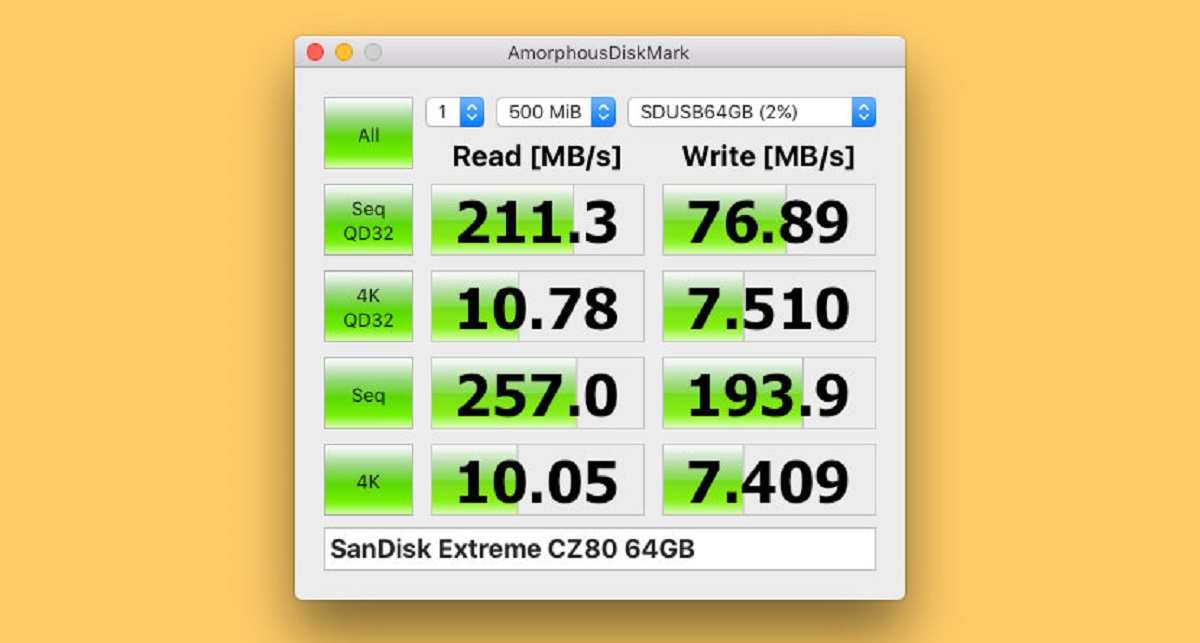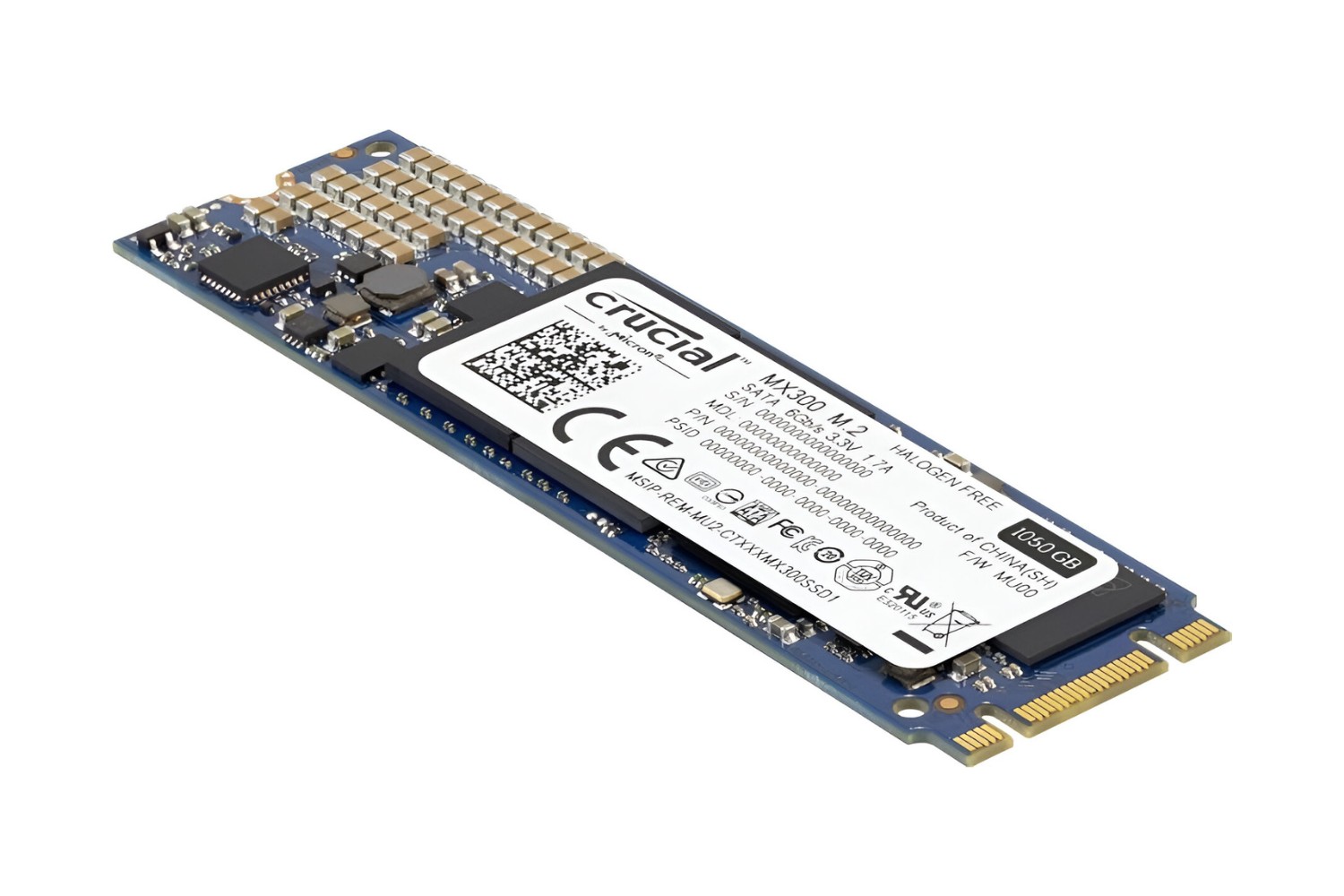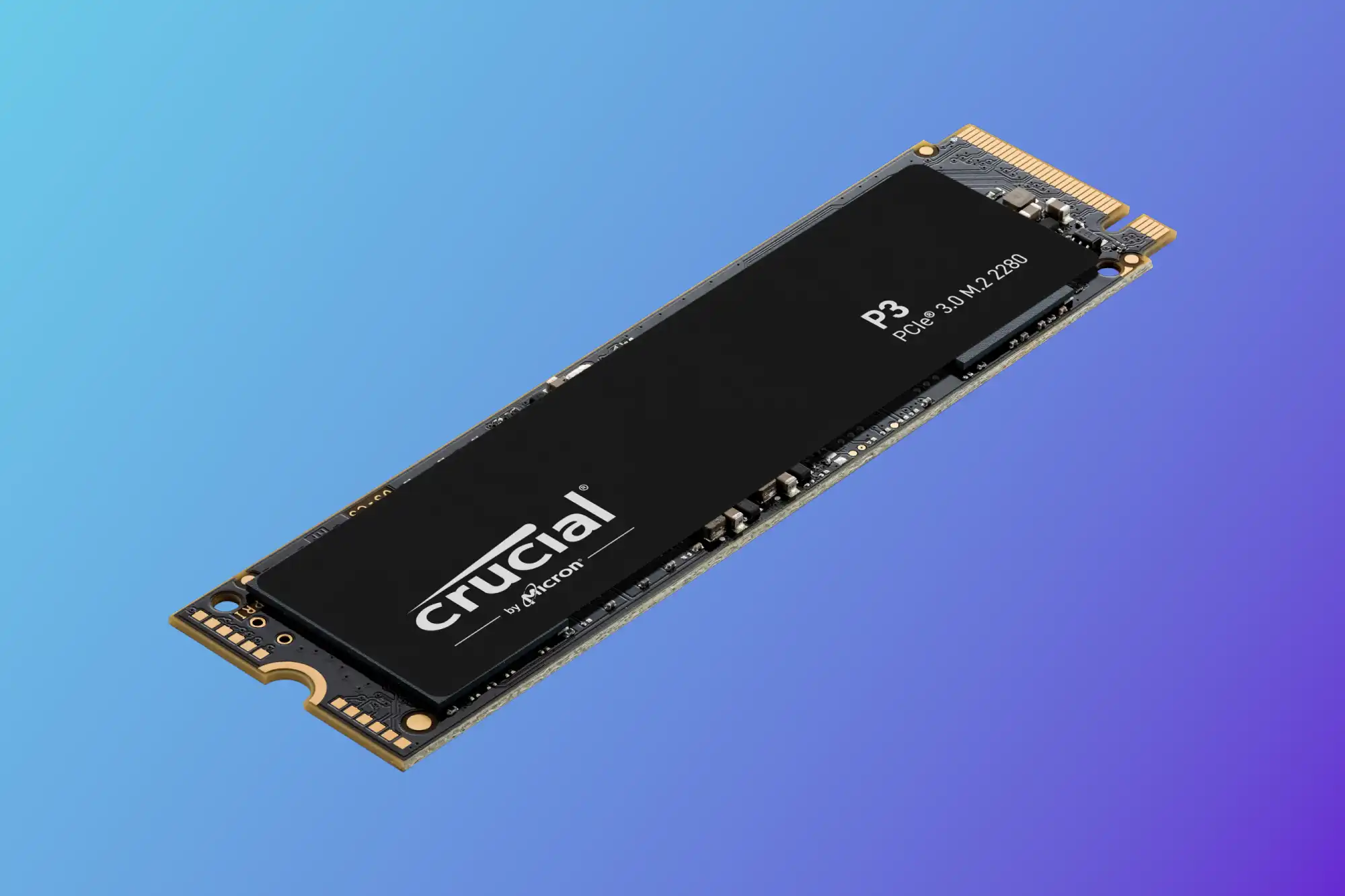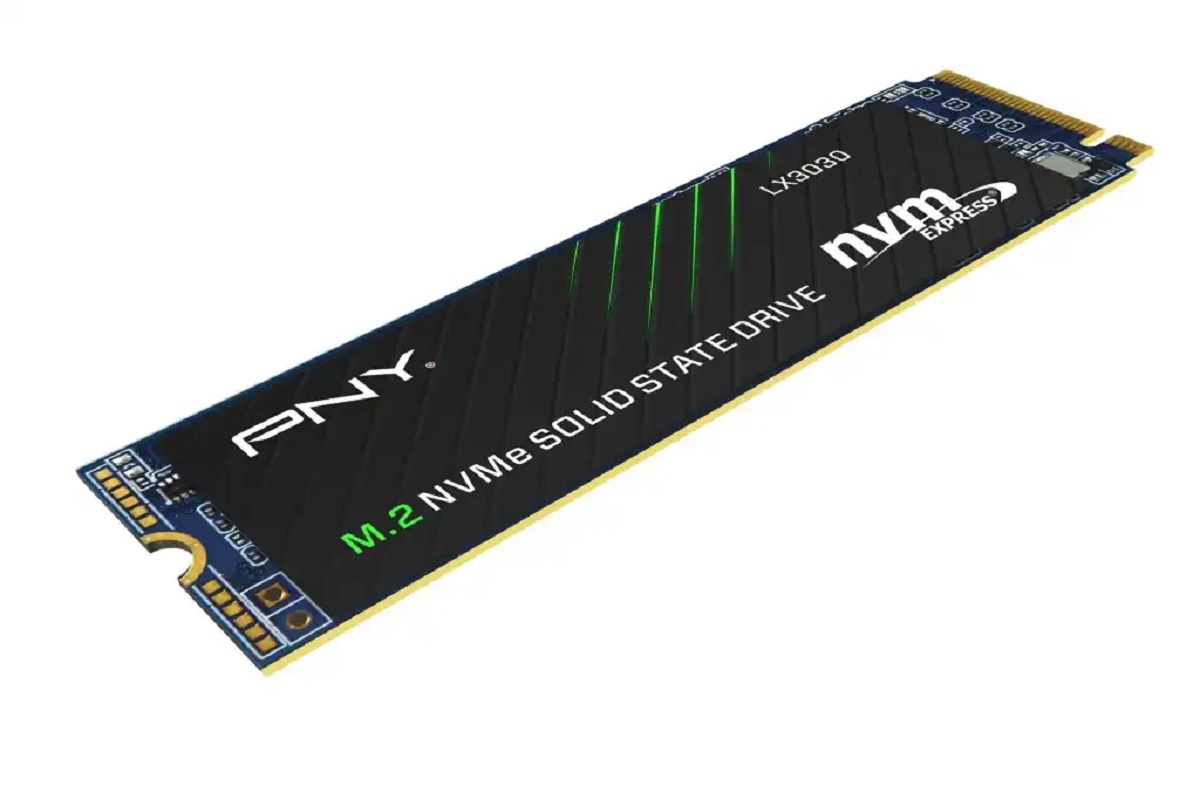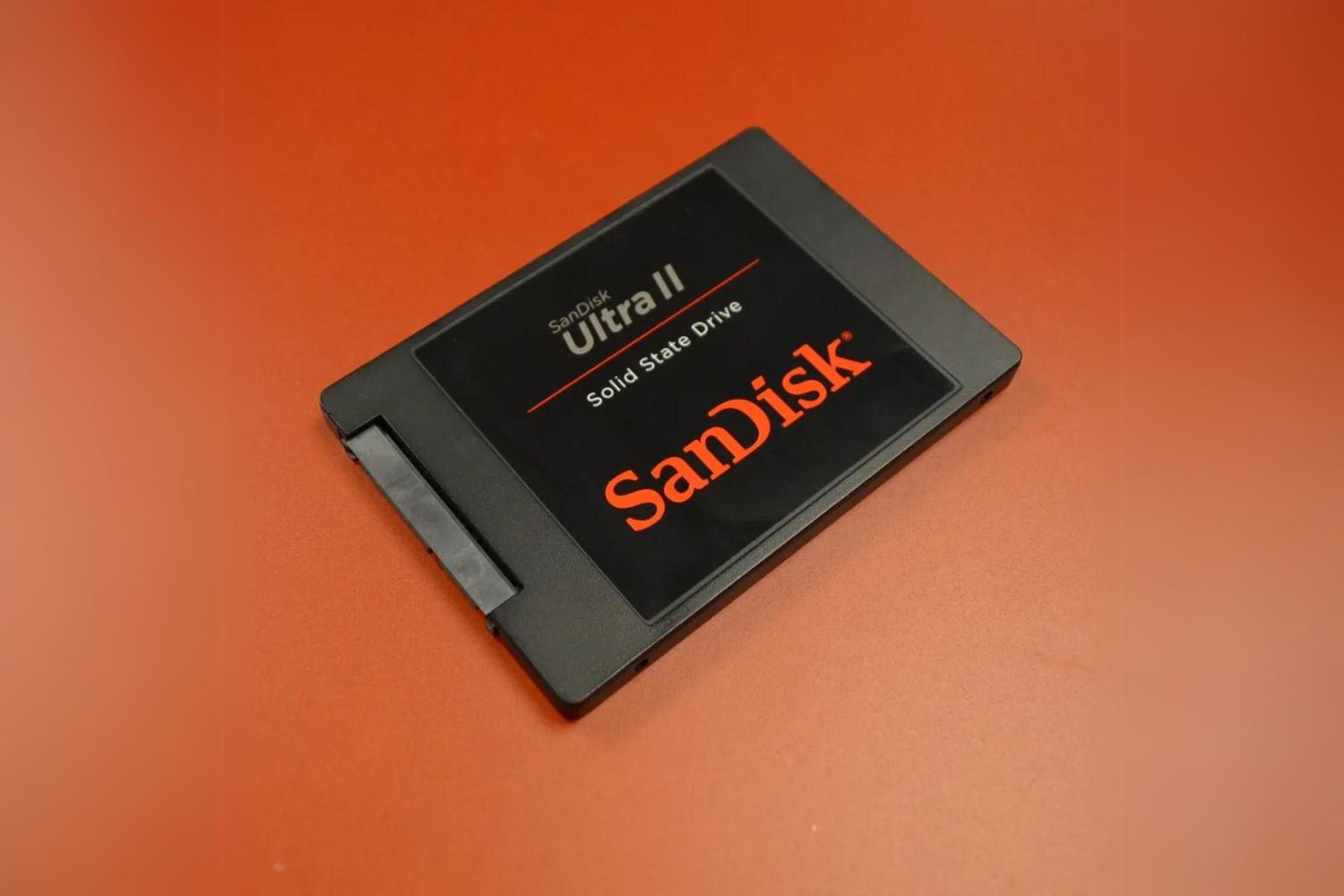Introduction
Welcome to our comprehensive guide on how to check SSD read write speed. If you’re a tech enthusiast or simply looking to optimize your computer’s performance, understanding the speed capabilities of your solid-state drive (SSD) is essential.
An SSD, unlike traditional hard disk drives (HDD), uses flash memory to store and retrieve data, resulting in faster access times and improved overall performance. However, not all SSDs are created equal, and their read write speeds can vary significantly.
By evaluating your SSD’s read write speed, you can determine how quickly it can transfer data, load applications, and handle large files. This information is crucial for tasks such as multimedia editing, gaming, virtualization, and other resource-intensive activities.
In this guide, we will explore why SSD read write speed is important, and we will provide step-by-step instructions on how to check the speed of your SSD using various benchmarking tools. Additionally, we will offer tips on how to improve your SSD’s performance if the results are not up to par.
Whether you’ve just purchased a new SSD or you’re curious about the capabilities of your existing drive, this guide will equip you with the knowledge and tools to evaluate your SSD read write speed effectively.
What is SSD Read Write Speed?
SSD read write speed refers to the rate at which data can be read from and written to an SSD. It is usually measured in terms of megabytes per second (MB/s) or gigabytes per second (GB/s). Essentially, it indicates how quickly the SSD can retrieve and transfer data.
When an SSD is able to read and write data at high speeds, it can significantly improve the overall performance of your computer. Faster read speeds mean that your operating system and applications load more quickly, allowing for a more responsive user experience. Likewise, faster write speeds ensure that your files, documents, and multimedia are saved rapidly and efficiently.
The SSD read write speed is determined by several factors, including the type of NAND flash memory used, the controller’s efficiency, and the interface that connects the SSD to your computer (such as SATA or PCIe). Different SSD models and brands will have varying read write speed capabilities, so it’s important to understand the specifications of your specific SSD.
It’s worth noting that SSD read write speed can vary depending on the type of data being accessed. Sequential read/write speeds refer to large, contiguous files being read or written in a linear manner. In contrast, random read/write speeds pertain to smaller files accessed in a non-linear fashion.
For tasks such as booting up your operating system, launching applications, or transferring large files, sequential read write speeds are the most crucial. On the other hand, random read write speeds are more important for activities like database management or running virtual machines.
Understanding your SSD’s read write speed is essential for maximizing its potential and ensuring that it meets the demands of your computing needs. In the following sections, we will explore various methods to check the read write speed of your SSD, allowing you to get a clear picture of its performance capabilities.
Why is SSD Read Write Speed Important?
The read write speed of an SSD plays a crucial role in determining the overall performance and responsiveness of your computer. Here are a few reasons why SSD read write speed is important:
- Faster Data Transfer: With faster read write speeds, you can transfer files and data more quickly. This is particularly useful when dealing with large multimedia files or performing backups. Increased read write speed means less time waiting for files to copy or transfer, allowing you to be more productive.
- Improved System Boot Time: One of the most noticeable benefits of a high read speed SSD is the reduced boot time. With faster read speeds, your operating system loads more quickly, allowing you to get to work or start gaming without unnecessary delays. This boost in start-up time can greatly enhance your overall user experience.
- Enhanced Application Loading: Applications stored on an SSD benefit from faster read times. This means that software applications, games, and utilities will launch faster, giving you a snappy and fluid computing experience. Whether you’re editing photos, playing games, or working with resource-intensive software, faster application loading times can make a noticeable difference.
- Improved File Saving: When saving files, a faster write speed means minimal waiting time. This is particularly important if you work with large files, such as high-resolution images or videos, where timely saving is crucial. With faster write speeds, you can reduce the risk of data loss and increase productivity by saving your work rapidly and efficiently.
- Better Multitasking: A high read write speed SSD can handle multiple operations simultaneously, allowing for smoother multitasking. Whether you’re editing videos, running virtual machines, or performing data-intensive tasks, a fast SSD ensures that your system can juggle these tasks efficiently without slowing down.
Ultimately, the read write speed of your SSD directly impacts the speed and efficiency of your everyday computing tasks. It can provide a noticeable boost in performance, leading to improved productivity, reduced wait times, and an overall smoother user experience. Understanding the importance of SSD read write speed will help you make informed decisions when it comes to choosing and optimizing your storage solution.
How to Check SSD Read Write Speed
Checking the read write speed of your SSD is a straightforward process that can be done using various benchmarking tools. Here, we will outline four common methods:
- Method 1: Using CrystalDiskMark: CrystalDiskMark is a popular benchmark tool that measures both sequential and random read/write speeds. Download and install CrystalDiskMark, then select your SSD drive and run the benchmark. Analyze the results to determine the read write speed of your SSD.
- Method 2: Using AS SSD Benchmark: AS SSD Benchmark is another reliable tool for assessing SSD performance. After downloading and installing the tool, open it and select your SSD drive. Click on “Start” to begin the benchmarking process. AS SSD Benchmark will provide comprehensive data, including read and write speeds, access times, and IOPS (input/output operations per second) values.
- Method 3: Using HD Tune: HD Tune is a versatile utility that offers a range of features, including a benchmark tool to measure SSD performance. Install HD Tune, select your SSD drive, and click on the “Benchmark” tab. Start the benchmark to obtain detailed information about your SSD’s read write speed, access time, and burst rate.
- Method 4: Using ATTO Disk Benchmark: ATTO Disk Benchmark is a powerful tool specifically designed to measure storage system performance. Install and launch ATTO Disk Benchmark, select your SSD drive, and configure the test parameters (e.g., transfer size, queue depth). Click on “Start” to initiate the test. ATTO Disk Benchmark will provide a detailed graph representing the read and write speeds at different file sizes.
Once you have performed the benchmark using one of the above methods, you will obtain the read write speed results of your SSD. These results will give you valuable insight into the performance capabilities of your SSD in terms of both sequential and random operations.
It’s important to note that the read write speeds may vary depending on factors such as drive health, firmware versions, and the workload on your system at the time of testing. It’s advisable to conduct the benchmark multiple times to get consistent results.
Understanding the read write speed of your SSD allows you to gauge its performance capabilities and identify any potential issues. With this information, you can make informed decisions regarding storage optimization and ensure that your SSD is operating at its full potential.
Method 1: Using CrystalDiskMark
CrystalDiskMark is a popular benchmarking tool that can effectively measure the read write speed of your SSD. Here’s how to check your SSD’s performance using CrystalDiskMark:
- Download and install CrystalDiskMark from the official website.
- Launch CrystalDiskMark by double-clicking the application icon.
- In the main window, select the SSD drive you want to benchmark from the drop-down menu. Make sure you choose the correct drive as multiple drives may be listed.
- Choose the number of test runs you want to perform. For an accurate assessment, it is recommended to run multiple tests.
- Select the test size. CrystalDiskMark provides various options, such as 50MB, 100MB, and 1GB. Choosing a larger test size can provide a more accurate representation of your SSD’s performance.
- Click on the “All” button to run all the available tests (sequential read/write, random read/write) simultaneously. Alternatively, you can select specific tests to run by clicking on the individual buttons.
- Wait for the benchmark tests to complete. The progress will be displayed as each test finishes.
- Once the tests are complete, CrystalDiskMark will display the results in its main window. The read and write speeds, measured in megabytes per second (MB/s), will be shown for each test performed.
- Take note of the read write speeds and compare them to the specifications of your SSD or industry standards to evaluate the performance of your drive.
CrystalDiskMark provides valuable information about your SSD’s performance capabilities, including sequential and random read write speeds. The sequential read write speeds indicate how fast your SSD can transfer large, contiguous files, while the random read write speeds showcase its efficiency in handling smaller files.
It is worth mentioning that the read write speeds obtained from CrystalDiskMark are influenced by various factors, such as the health of your SSD, the firmware version, and the workload on your system. For consistent results, it is recommended to run multiple benchmark tests and take an average of the read write speeds.
Using CrystalDiskMark to check your SSD read write speed is an effective way to assess its performance and identify any areas of improvement. With this information, you can optimize your storage setup and ensure that your system is running at its full potential.
Method 2: Using AS SSD Benchmark
AS SSD Benchmark is a popular tool designed specifically for assessing the performance of SSDs. Follow these steps to check your SSD’s read write speed using AS SSD Benchmark:
- Download AS SSD Benchmark from the official website and install it on your computer.
- Launch AS SSD Benchmark by double-clicking the application icon.
- In the main window, you will see a list of available drives. Select your SSD drive from the list by clicking on it.
- Once you’ve selected your SSD drive, click on the “Start” button located at the bottom of the window to begin the benchmarking process.
- AS SSD Benchmark will perform several tests to measure your SSD’s performance, including sequential and random read write speeds, access times, and IOPS (input/output operations per second) values.
- Wait for the benchmark to complete. The progress will be indicated on the screen.
- After the benchmark is finished, AS SSD Benchmark will display the results on the screen in a detailed graphical format. The read and write speeds, measured in megabytes per second (MB/s), will be clearly indicated.
- Review the results and take note of the read write speeds. Compare them to the specifications of your SSD or industry standards to evaluate the performance of your drive.
AS SSD Benchmark provides comprehensive data on your SSD’s performance, offering insights into its sequential and random read write speeds, access times, and IOPS values. This information can help you understand how your SSD performs in real-world scenarios and how it compares to other drives.
Remember that the results obtained from AS SSD Benchmark can be influenced by various factors, such as the health of your SSD, the firmware version, and the workload on your system. For accurate and consistent results, it is advisable to run multiple benchmark tests and compare the average values.
Using AS SSD Benchmark to check your SSD’s read write speed is an effective way to gauge its performance capabilities and identify any areas of improvement. By understanding your SSD’s performance, you can make informed decisions about storage optimization and ensure that your system operates at its full potential.
Method 3: Using HD Tune
HD Tune is a versatile utility that offers various features, including a benchmark tool to measure the performance of your SSD. Here’s how you can use HD Tune to check the read write speed of your SSD:
- Download and install HD Tune from the official website onto your computer.
- Launch HD Tune by double-clicking the application icon.
- In the main window, select your SSD drive from the drop-down menu at the top-right corner. Make sure to choose the correct drive as multiple drives may be listed.
- Click on the “Benchmark” tab, located at the top of the window.
- Configure the benchmark settings. You can choose the “Full” or “Quick” benchmark, select the test file size, and adjust the block size. For accurate results, it is recommended to choose a larger test file size.
- Click on the “Start” button to begin the benchmarking process.
- HD Tune will perform several tests, including sequential read write tests, to measure the performance of your SSD.
- Wait for the benchmark to complete. The progress will be displayed on the screen.
- Once the benchmark is finished, HD Tune will display the results in a graphical format, showing the read and write speeds at different points on the drive.
- Analyze the results displayed by HD Tune, and take note of the read write speeds measured in megabytes per second (MB/s) to evaluate the performance of your SSD.
HD Tune provides valuable information about your SSD’s performance, including sequential read write speeds and access times. The benchmark results can give you insights into your SSD’s capabilities when it comes to transferring larger files.
Keep in mind that the results obtained from HD Tune can be affected by various factors such as the health of your SSD, firmware versions, and the workload on your system. To obtain accurate and consistent results, it is advisable to run multiple benchmark tests and compare the average values.
Using HD Tune to check the read write speed of your SSD is an effective way to assess its performance and identify any areas for improvement. With this information, you can optimize your storage setup and ensure your system is operating at its full potential.
Method 4: Using ATTO Disk Benchmark
ATTO Disk Benchmark is a powerful tool designed specifically to measure the performance of storage systems, including SSDs. Follow these steps to check the read write speed of your SSD using ATTO Disk Benchmark:
- Download and install ATTO Disk Benchmark from the official website onto your computer.
- Launch ATTO Disk Benchmark by double-clicking the application icon.
- In the main window, select your SSD drive from the drop-down menu at the top-left corner. Make sure you select the correct drive as multiple drives may be listed.
- Set the desired parameters for the benchmark test. You can adjust the transfer size, queue depth, and total length to customize the test according to your preferences.
- Click on the “Start” button to initiate the benchmark test.
- ATTO Disk Benchmark will perform a series of read write tests at different file sizes to measure the performance of your SSD.
- Wait for the benchmark test to complete. The progress will be displayed on the screen.
- Once the test is finished, ATTO Disk Benchmark will present the results in an easy-to-read graphical format. The read and write speeds, measured in megabytes per second (MB/s), will be displayed for different file sizes.
- Examine the results obtained from ATTO Disk Benchmark, focusing on the read write speeds, to assess the performance of your SSD.
ATTO Disk Benchmark provides detailed information about your SSD’s performance capabilities at different file sizes. The graphical representation allows you to see how your SSD performs when reading from and writing to files of various sizes.
Remember that the results obtained from ATTO Disk Benchmark can be influenced by factors such as the health of your SSD, the firmware version, and the workload on your system. For accurate and consistent results, it is advisable to run multiple benchmark tests and compare the average values.
Using ATTO Disk Benchmark is an effective way to check the read write speed of your SSD and gain insights into its performance. With this information, you can make informed decisions about optimizing your storage setup and ensure that your system utilizes your SSD’s full potential.
Interpreting the Results
Once you have performed the benchmark tests using any of the methods mentioned above, you will have obtained the read write speed results of your SSD. It’s important to interpret these results correctly to understand the performance of your SSD. Here are some key factors to consider when interpreting the results:
- Sequential read and write speeds: These speeds indicate how fast your SSD can transfer large, contiguous files. Higher sequential speeds mean faster data transfer and improved performance for tasks such as loading applications or transferring multimedia files.
- Random read and write speeds: These speeds pertain to the SSD’s ability to handle smaller file transfers in a non-linear manner. Faster random speeds can significantly improve the speed of operations that involve accessing numerous small files, such as database management or running multiple virtual machines.
- Comparison with SSD specifications: Compare your SSD’s read write speeds with its specifications provided by the manufacturer. This will help you determine if your SSD is performing as expected or if it’s falling short of its advertised capabilities.
- Benchmark variations: Keep in mind that different benchmarking tools may yield slightly different results due to variations in testing methods, algorithms, or parameters. It’s a good practice to run multiple tests and average the results for more accurate assessment.
- Identifying potential issues: If your SSD’s read write speeds are significantly lower than expected or considerably lower than the average speeds for similar SSDs, it may indicate potential issues with the drive, such as firmware problems, driver conflicts, or hardware limitations.
It’s important to note that read write speeds can vary depending on factors such as the health of the SSD, firmware versions, and the workload on your system at the time of testing. Additionally, keep in mind that SSD performance is not solely determined by read write speeds, as other factors like latency, IOPS, and drive longevity also play a role.
By interpreting the benchmark results accurately, you can gain valuable insights into your SSD’s performance and make informed decisions regarding storage optimization or the need for any hardware or software adjustments.
Tips for Improving SSD Read Write Speed
If you want to optimize the read write speed of your SSD and maximize its performance, here are some helpful tips to consider:
- Update SSD firmware: Check for firmware updates from the manufacturer’s website. Frequently, SSD firmware updates can include performance improvements and bug fixes that boost read write speeds.
- Enable AHCI mode: Ensure that your SSD is set to AHCI (Advanced Host Controller Interface) mode in the motherboard BIOS. This mode allows for optimized communication between the SSD and the system, resulting in improved performance.
- Enable TRIM: TRIM is a feature that helps maintain SSD performance over time by optimizing data management. Enable TRIM in your operating system to enhance the longevity and read write speeds of your SSD.
- Optimize your operating system: Regularly clean up unnecessary files, disable unnecessary startup programs, and perform disk defragmentation. These actions can help improve overall system performance, including read write speeds on your SSD.
- Avoid filling up your SSD: Keep around 10-20% of your SSD’s storage capacity free. This allows the SSD to perform wear leveling and garbage collection more effectively, leading to better read write speeds.
- Disable indexing and unnecessary services: Indexing and certain background services can cause unnecessary read write operations on your SSD and slow down its performance. Disable indexing or limit it to specific folders, and disable any unnecessary background services to free up system resources.
- Use high-quality SATA cables: Ensure that you are using reliable and high-quality SATA cables to connect your SSD to the motherboard. Faulty or low-quality cables can impact the performance of your SSD.
- Avoid extreme temperatures: High temperatures can negatively affect SSD performance. Maintain a well-ventilated system with proper cooling to prevent overheating and potential degradation of your SSD’s read write speeds.
- Monitor drive health: Regularly check the health and status of your SSD using tools provided by the manufacturer. Identifying any potential issues early on can help you take appropriate action to maintain optimal performance.
Implementing these tips can enhance the read write speed of your SSD and improve your overall system performance. However, it’s important to note that SSD performance is also influenced by factors such as the quality of the SSD itself, its controller, and the interface being used.
By following these suggestions and keeping your SSD properly maintained, you can ensure that it operates at its full potential, delivering fast read write speeds for your daily computing needs.
Conclusion
Checking the read write speed of your SSD is essential for understanding its performance capabilities and maximizing your computer’s efficiency. By utilizing benchmarking tools such as CrystalDiskMark, AS SSD Benchmark, HD Tune, and ATTO Disk Benchmark, you can accurately measure the read write speeds of your SSD and gain valuable insights into its performance.
Interpreting the benchmark results correctly is crucial. Consider factors such as sequential and random read write speeds, comparison with manufacturer specifications, and potential issues that may affect the performance of your SSD.
To improve SSD read write speed, you can update the SSD firmware, enable AHCI mode, enable TRIM, optimize your operating system, avoid filling up your SSD, disable unnecessary services, use high-quality SATA cables, maintain optimal temperatures, and monitor drive health regularly.
By implementing these tips, you can enhance the read write speed of your SSD, leading to faster file transfers, reduced boot times, improved application loading, and enhanced overall system performance.
Remember that while read write speed is an important factor, it’s not the only aspect that determines SSD performance. Other factors, such as latency, IOPS, and drive longevity, should also be considered when evaluating SSD performance and making decisions regarding storage optimization.
With a clear understanding of your SSD’s read write speed and the ability to optimize its performance, you can ensure that your SSD operates at its full potential, providing you with a smooth and efficient computing experience.









